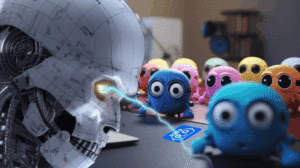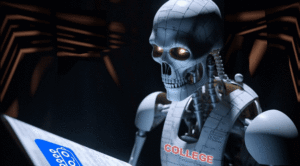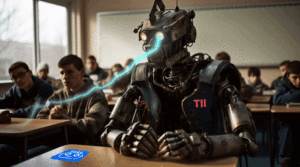It’s becoming a real head-scratcher to tell them apart human-written vs AI-generated text, right? So it’s about time you learn how to detect AI-generated text.
Picture this: you’re scrolling through your favorite blog, and something feels …. off. The words are too perfect, the sentences are flowing like a measured melody, and you can’t help but wonder—is this the handiwork of a human or an AI?
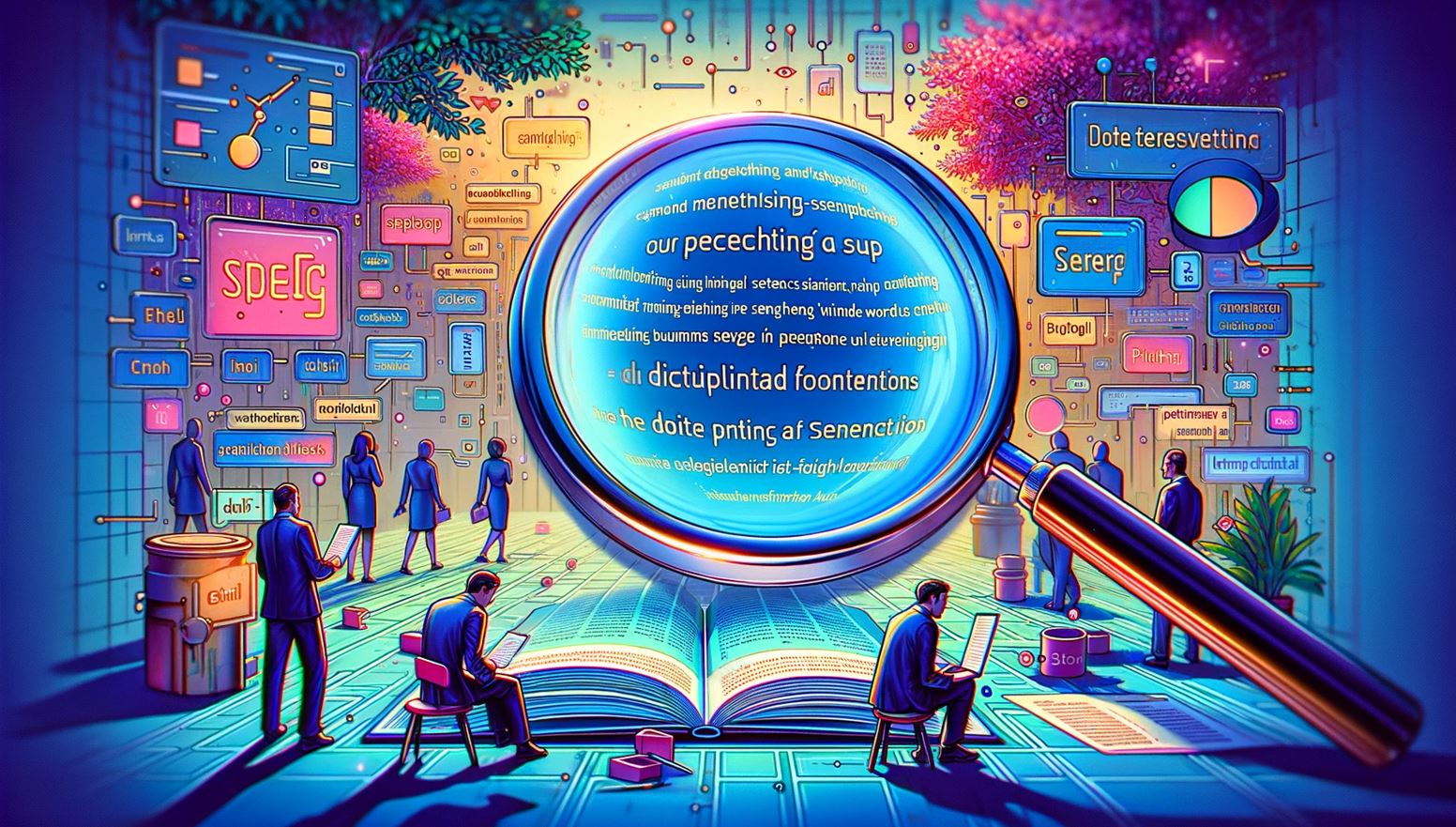
Try these new AI-powered tools:
- 5 Best AI Detectors To Unmask AI-Written Content With Accuracy
- 5 Best AI Writers To Boost Your Productivity And Content Quality.
- This "Secret AI Writer" Can Bypass AI Detection Like A Pro.
You’re not alone in this digital age where typing fingers are sometimes replaced by artificial intelligence.
Here’s the scoop—one nifty fact for those curious minds out there: AI detectors zero in on text quirks like uniform sentence lengths and predictable word choices—stuff that might reveal if it’s Mr. Robot behind those words instead of a person.
In our quick read today, we’ll pull back the curtain and show you how to spot these undercover AIs masquerading as humans. Let’s deep dive to learn how to detect AI-generated text.
Article At-A-Glance
- AI-generated text often lacks the little errors that people make, may sound too perfect or robotic, and sometimes uses strange word choices.
- Tools like Copyleaks AI Content Detector and Google’s Detect AI Content can help figure out if something was written by a machine.
- Using smart tricks like looking for repetition or sentences that sound all the same can clue you in on whether you’re reading computer-generated content.
- It’s important to think about right and wrong when using AI to write. We should not let it copy other people’s ideas without giving them credit.
- Schools are teaching how to spot texts made by AIs so students learn to use technology in fair ways and keep their work honest.
Table Of Contents
How To Detect AI-Generated Text
Alright folks, let’s put on our detective hats and dive into the murky waters of AI-generated text. Ever stumbled upon an article and thought, “Hmm, did a human brain noodle this out or did a robot have its way with a keyboard?” We’re about to uncover the tell-tale signs that scream – or at least whisper conspiratorially – “I was penned by AI!” From oddly formal phrases that no self-respecting person would use in casual convo, to those quirks in prose that just don’t vibe like your typical coffee-fueled midnight ramble.
We’re onto them! So grab your magnifying glass (or maybe just your skeptic’s eyebrow) as we explore how to spot when you’re dealing with words whipped up by our silicon pals rather than flesh-and-blood scribes.
Common Methods For Detecting AI-Generated Text
AI-written words are everywhere! To spot them, people use some smart tricks. Here’s a peek at how they do it:
- Look for too-perfect writing. AI texts often miss those little mess-ups that humans make when they write.
- Check if the sentences feel ‘robotic’. Sometimes, AI writes in a stiff way that does not sound quite human.
- Notice any weird word choices. Computers can pick odd words that a person wouldn’t usually use.
- Spot if the text repeats itself. AIs might say the same thing repeatedly, just with different words.
- See if the details are shallow. When AI talks about stuff, it often doesn’t know enough to go deep.
- Look out for words that seem out of place. Sometimes AIs throw in fancy or strange words where they don’t belong.
- Check if sentences match too well. If you read something and it feels like it came from a textbook, an AI might be behind it.
- Look for ideas that don’t quite connect. A human writer usually has clear thoughts that go together well – AI, not so much.
- See if an emotion or style is missing. If there’s no personality in the writing, you might be reading something from an AI.
Features Of AI-Generated Text To Look For
Alright, let’s dive into what you should keep an eye out for when you’re trying to spot AI-generated text. These robot-crafted words can be pretty sneaky, but there are some tells that give them away.
- Repetition
- Too perfect or too messy
- Lack of depth
- Odd word choices
- Stiff sentences
- Common knowledge
- Similar styles
The Dangers Of AI-Generated Text
Alright, let’s get real for a sec—AI-generated text is popping up everywhere, and it’s not all sunshine and rainbows. It’s kinda like when you buy those knockoff sneakers that look legit until they start falling apart after one jog.
Sure, this tech can churn out words faster than a caffeinated college student during finals week, but with speed comes the risk of spreading info that’s about as fresh as last week’s sushi.
Plus—and here’s the kicker—it often lacks that human touch (you know what I’m talking about), which means it might leave you feeling like something’s missing …. like soul or pizzazz! And don’t even get me started on its love affair with repetitive language because sometimes it sounds like a broken record—no offense to vintage vinyl collectors.
Incorrect And Outdated Information
AI-generated text can trip you up with facts that are just plain wrong or old news. Imagine reading something and finding out it’s not true anymore—or never was! That happens because AI tools use stuff they find online, which might include mistakes or info that’s way out of date.
Now think about how fast things change these days. By the time an AI writes about a topic, what it says could be yesterday’s story. We’re talking about serious risk here if people start believing things that aren’t right anymore.
That mix-up can spread false tales and twisted truths like wildfire. You’ve got to have your detective hat on to catch those sneaky errors before they catch you!
Lack Of Depth And Personality
Text made by AI can feel kind of empty. It follows rules it learned from lots of words written by people but often misses the special touch that makes writing alive and full of feeling.
Imagine a friend telling you a story without any fun twists or emotions—that’s how these robot-written pieces can seem.
Now let’s think about what makes our own words sparkle with life. We bring in our feelings, ideas no one else has thought of, and ways of seeing the world that show who we are. But machines? They just don’t get all that deep stuff yet.
Sure, they can whip up facts like nobody’s business, but when it comes to real creativity and understanding different cultures—the heart and soul behind the words—they’re still learning.
Next up: those sneaky times when AI text tries to sound human—repetitive language is one big clue!
Repetitive Language
So, you’re reading something and it starts to feel like a broken record. That’s because AI often gets stuck on repeat—using the same words way too much. It might lean hard on favorites like “the,” making sentences seem stuffed.
You know what I mean? Everything sounds kind of robotic and lacks that zing real people sprinkle into their chat.
Beware! Text that feels clunky, where each sentence is like the last, screams artificial intelligence. It doesn’t have the huge word closet humans do, so it ends up tossing in predictable vocabulary again and again.
Keep an eye out for this—it’s one big clue you’ve got AI-generated language on your hands!
Understanding AI-Generated Text
Ever stumbled upon a piece of writing so polished yet oddly impersonal that you thought to yourself, “Hmm.. could a robot have penned this masterpiece?”
Well, buckle up, fellow humanoids! We’re about to dive headfirst into the wild world of AI-generated text—unpacking the nuts and bolts (literally) behind those eerily coherent articles that might just be tricking us into believing they possess a beating heart.
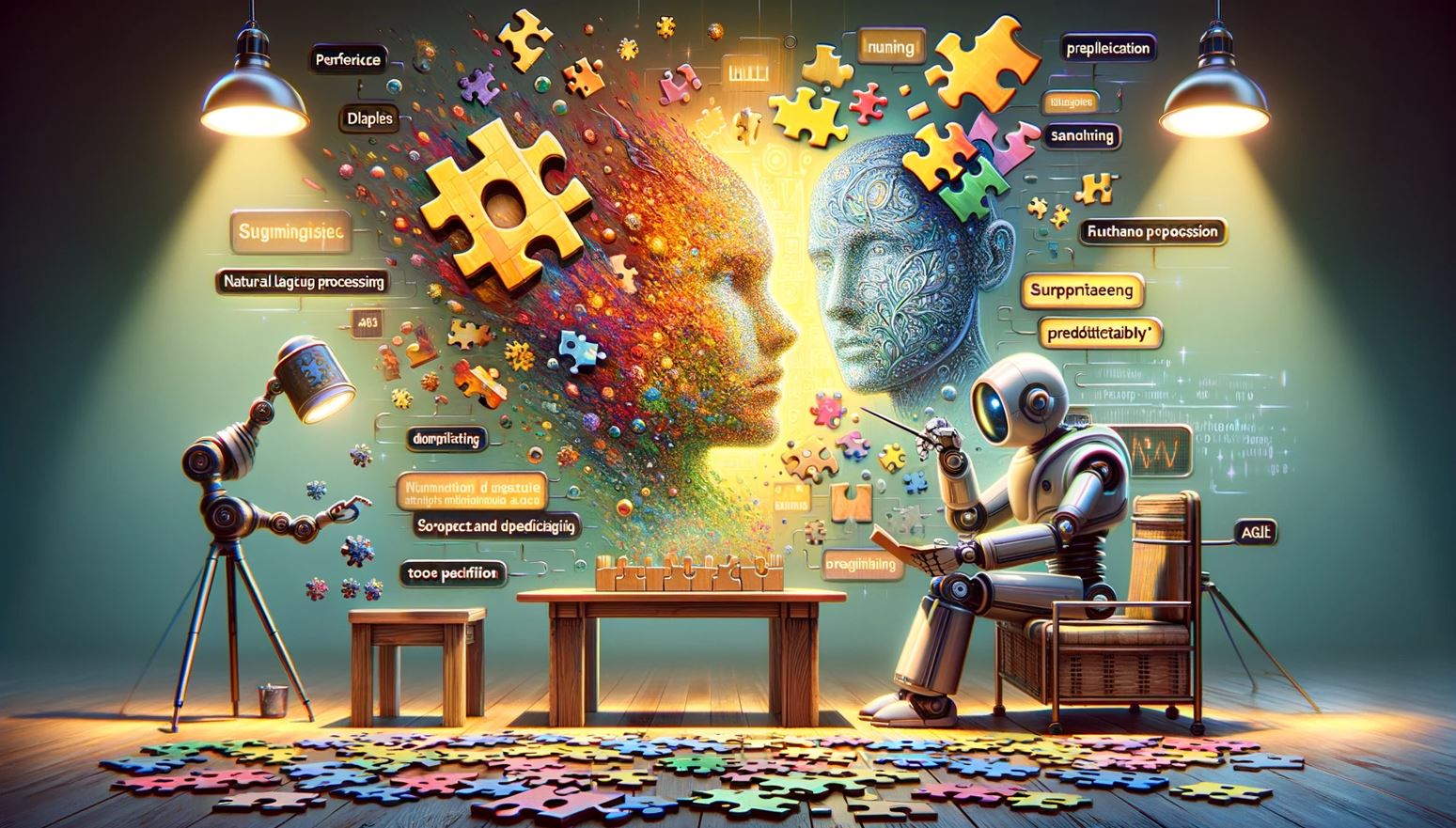
What Is AI Content Detection?
AI content detection is a smart way to tell if text was made by a computer or a person. It looks for clues in the way words are put together. This can be hard because some AI write almost like humans! But don’t worry, tools for this have some cool tricks.
They use things called natural language processing and machine learning algorithms. These big words just mean they’re good at spotting patterns that usually come from AI.
Now, imagine you’ve got two puzzles – one done by your friend and one by a robot. The robot’s puzzle might look perfect but maybe too perfect with pieces fitting exactly right every time.
Well, AI content detection can spot this “too perfect” writing because it tends to have something called low perplexity—it doesn’t surprise us much with its word choices. Human writing is less predictable and has higher perplexity—like when your friend tells you an amazing story full of surprises.
This tech works hard, checking lots of books, articles, websites—all sorts of places—to learn about different kinds of writing styles (yeah, even the wacky ones!). By doing this homework (and we’re talking about a LOT of homework), it gets better at telling who wrote what – fancy computers or brainy humans?
So why does all this matter? Let’s dive into plagiarism detection next.
What Is Plagiarism Detection And Is AI Content Considered Plagiarism?
Plagiarism detection means using special tools to find out if someone copied work that is not theirs. Now, when we talk about AI that writes stuff—like stories or articles—it’s a bit tricky.
Some folks say it’s plagiarism because the AI might use words it learned from other people’s writing, without asking. Imagine you told your robot to paint a picture, but instead of making something new, it just copies a Picasso.
That’s kind of what happens with some AI writing.
But here’s the rub: unlike copying straight from a book or website, AI mixes up everything it knows and tries to make something fresh out of it—it doesn’t just copy-paste. So while you can’t call it stealing in the traditional sense (the way you’d call taking someone else’s essay cheating), some think using AI takes away credit from real live writers who put their own elbow grease into their work.
These arguments mean that folks are working hard on building things that can spot if the text came from an AI or a human brain. Old-school checkers for stolen words don’t always catch these clever AIs in action—that’s why smarter tech is on its way!
Tools For Detecting AI-Generated Text
Alright, buckle up ’cause we’re diving into the digital detective kit! Tools for detecting AI-generated text are like those fancy gadgets in spy movies—only these are real and you don’t need to be a secret agent to use them.
These platforms aren’t your grandma’s plagiarism checkers. They’re souped-up, algorithm-powered magnifying glasses that can sniff out machine-written prose faster than you can say “Blade Runner.” So, let’s gear up and see what tech magic is on offer to keep our content authentically human.
Popular AI Content Detection Platforms
There are a bunch of tools out there to catch AI-written text. It’s as if you’re playing a game of hide-and-seek but for words written by robots. Here’s the scoop on some go-to gadgets that can spot when a computer is trying to sound human:
Comparison To Traditional Plagiarism Checkers
Sure, let’s dive right into how those AI text detectors size up against the old-school plagiarism checkers, folks.
| Feature | Traditional Plagiarism Checkers | AI Content Detection Tools |
|---|---|---|
| Primary Function | Identify directly copied text | Detect patterns indicative of AI-generated content |
| Language Support | Often multilingual | May only support English |
| Detection Approach | Text-matching against known sources | Analyzing syntactic and stylistic features unique to AI |
| Technology Used | Database lookups, keyword matching | Machine learning algorithms, natural language processing |
| Modern Relevance | Struggles with detecting rephrased or AI-generated content | Specifically designed for the nuances of AI-generated texts |
| Developer Innovations | Primarily focused on source-based plagiarism | Turnitin and others creating tools just for AI text detection |
Now, just remember—these fancy new tools aren’t saying “Catch ya later!” to our good ol’ plagiarism checkers. They’re more like the fresh-faced sidekick, geared up to tackle the AI challenge head-on. Keep it in your toolkit, and you’ll be ready for whatever those clever bots throw at you!
Responsible Use Of AI Tools
So, diving into the world of AI tools and how we wield them …. it’s not all about clapping our hands in glee at the shiny tech. It’s a serious game of ethics and smarts—kinda like Spider-Man with his “great power comes great responsibility” spiel.
We’ve gotta be wise about how we use these nifty gadgets, making sure we’re not stepping on any ethical toes or letting automation run wild without a leash (or, you know, proper oversight).
Stick around and let’s chat about keeping our digital ducks in a row.
Ethical Considerations
Using AI to write things can be tricky. We need to think about what’s fair and right. For example, making sure an AI does not create biased or fake news is big. Also, it’s not okay to use someone else’s ideas without saying it was them who thought of it first—that’s called plagiarism.
People using AI have to make sure they follow rules that keep writing honest and respect other people’s hard work.
It gets even more serious when you throw in privacy worries or how AI might choose one person over another unfairly. Imagine a computer deciding who gets a job or what medicine we should take. We’ve got to be super careful with that! Creators of these smart tools must always check if what they’re doing will hurt folks or mess with society in ways we didn’t expect.
It’s all about being responsible with the powerful stuff technology can do.
Importance Of Proper Training And Education
Teachers and students both need to get the hang of using AI tools the right way. With all this new tech popping up, it’s easy to slip up and hurt our chances for honest work. We’re talking about keeping it real – making sure what we turn in is ours and not some robot’s clever words.
Proper education on how to use these smart tools can save us from a whole lot of trouble down the line.
Schools are super into teaching folks how to spot AI text now because they know it matters big time. By being smart about how we use technology, we show that we care about doing things right.
It’s all about learning the rules so you can play fair – and isn’t that what school’s supposed to be all about? If everyone knows what’s cool and what’s not with AI, then we can trust the awesome stuff coming out of our brains just as much as what pops out from a computer screen.
Detect AI-Generated Text To Decode The Digital Deception
Alright, let’s wrap this up! You now have the know-how to spot those sneaky AI-written texts. Remember, it’s about looking for odd word choices and sentences that seem too perfect.
Super important because you want real info, not robot talk! There are tools – yes, free ones too – that help catch AI writing. They’re your new best friends in this detective game.
But don’t just take a tool’s word for it because sometimes they mess up. So keep your eyes peeled and use what you’ve learned here. Think of it like a superpower to see through the tricks of artificial text!
And hey, if you’re itching to learn more or get even better at this, there’s plenty out there to dive into. Keep up with the chase – we’re all in this together.
Now go out there and show those bots who’s boss!
FAQs
1. What’s a dead giveaway that text was made by AI?
If the writing seems too perfect, with no typos or slang, you might be looking at something an AI whipped up.
2. Can I tell if a story is AI-generated by how it sounds?
Yeah! If the story doesn’t quite flow right or misses common phrases we use, an AI could have made it.
3. Are there clues in long articles to spot AI text?
For sure – if it goes on and on without any real juicy bits or personal stories, you’ve probably caught an AI in action.
4. Do weird sentences show that an AI wrote something?
Totally – when things sound odd or out of place… like someone mixed up sayings… that’s a hint.
5. Will I get fooled by how smart the words are in AI text?
Don’t bet on it because sometimes AIs throw in big fancy words where they don’t really fit – kinda shows their robot hand!
Meet our resident tech wizard, Steve the AI Guy. Now, before you get any wild ideas, let’s clear up one thing – he’s 100% human! I mean, he’s got the work history to prove it. He spent a decade diving into the deep end of the tech industry doing business intelligence work, splashing around with two of the world’s largest business consulting companies, Deloitte and Ernst & Young. Learn More




